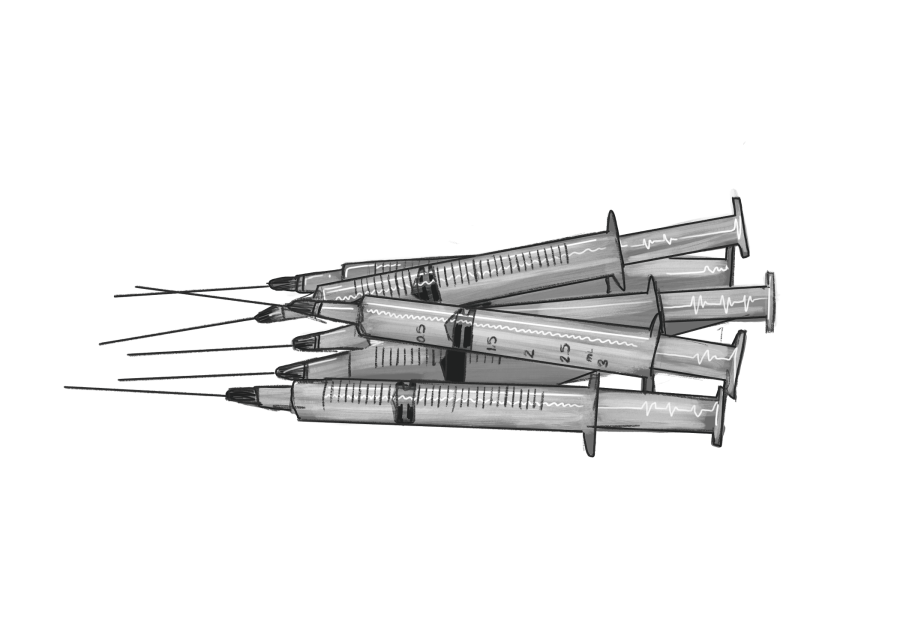San Francisco’s overdose rate was 13 per 100,000 people in 2010. In 2020, that number increased to 49 per 100,000. There is no denying the opioid epidemic is reaching new deathly proportions in the Bay Area.
In the last decade, around the time overdose numbers began to rise, the synthetic and dangerous drug fentanyl made its way to the streets of San Francisco. Users were both knowingly and unknowingly injecting themselves with high doses of fentanyl, resulting in fast overdoses. This drug is not only highly addictive but also more dangerous than typical opioids such as methamphetamine, cocaine, and heroin, needing only two grams to be fatal to most.
Now, residents of San Francisco are urging the city to make changes to not only decrease the use of overdoses from injectable drugs, but also reduce the diseases that continue to plague the city that come with needle sharing. When needles are not properly sanitized between each injection, bloodborne infections such as HIV and Hepatitis B and C can spread, leaving users immunocompromised and more susceptible to death from otherwise common infections.
The new opioid epidemic has prompted many politicians to approach the situation the same way President Ronald Reagan’s War on Drugs campaign did: by increasing arrests for possession and use. However, the War on Drugs proved more harmful than helpful, leading to mass incarceration and increased racial inequality. Repeating history is not the solution.
Instead, we need to treat the issue for what it is: a health crisis, not a criminal one. Implementing safe injection sites in San Francisco is an ethical and effective solution to combating drug usage.
Safe injection sites are medically supervised facilities equipped with trained medical staff, sanitized needles and areas, the overdose reversal drug Narcan and on-site substance abuse counseling where drug users can come to inject their own drugs.
Safe injection sites are especially crucial in preventing overdose fatalities as many fentanyl and other opioid overdoses cause immediate brain and nerve damage.
Practicing nurse Lisa Loewy said she is a supporter of safe injection sites.
“We already know people are going to use drugs, so at the very least, let’s give them a controlled environment where they are keeping their needles sterilized and there is trained supervision on-site to offer support and medical aid,” she said.
While the concept may seem abstract, safe injection sites have been effective in many international cities.
In 1997, Switzerland began implementing safe injection sites and brought its opioid-related deaths down by 63%.
Over an 18-month period in North Richmond, Australia, one safe injection site reversed over 3,000 overdoses and saved almost 30 lives.
Over the past 20 years, cities across the globe such as Barcelona, Luxembourg and Vancouver have opened their own safe injection sites and saw a noticeable drop in overdose-related deaths, blood-borne disease and public drug use.
Safe injection sites also offer support to users and encourage rehabilitative methods to help people face addiction.
“Hopefully people come in knowing they have access to others who can support them with their addiction as well as other problems they may be facing like homelessness and trouble finding emotional support,” Loewy said. “Social service options, as well as on-site medical professionals, are available to those willing to get help, which is more than you can say about the street.”
In Sydney, Australia, over 14,500 users were referred and placed in contact with rehabilitation services through safe injection sites, and Vancouver saw a 30% increase in users seeking addiction counseling.
In fact, in 2014, a review of over 75 different studies showed overwhelming evidence that safe injection sites were the most effective way to reduce drug use and overdose.
It has been 40 years since the War on Drugs, and now with more potent drugs wreaking havoc, we cannot afford to make the same mistakes we made then. We need progressive reform, beginning with the widespread establishment of safe injection sites.

